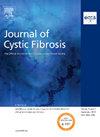加拿大囊性纤维化患者吸入抗生素使用与治疗中出现的微生物之间的关系
IF 6
2区 医学
Q1 RESPIRATORY SYSTEM
引用次数: 0
摘要
背景:在囊性纤维化(PwCF)患者中,吸入抗生素常被用作慢性铜绿假单胞菌(Pa)抑制治疗。然而,它们的使用可能会增加产生治疗紧急呼吸道有机体的风险。本研究旨在描述PwCF使用吸入抗生素的比例,确定与吸入抗生素处方相关的因素,并确定慢性吸入抗生素使用是否与烟曲霉、嗜麦芽窄养单胞菌或无色杆菌的风险增加有关。方法:这项回顾性队列研究利用了加拿大CF Registry的数据。Pa状态(慢性、间歇性和阴性)按日历年定义。比较PwCF处方与未处方吸入抗生素患者发生烟曲霉、嗜麦芽链球菌或无色杆菌的风险,使用治疗加权逆概率调整适应症的混杂因素。结果:本分析包括2800 PwCF的数据。在研究期间,75%患有慢性Pa的PwCF患者接受了吸入抗生素治疗,而高达13%的Pa阴性PwCF患者接受了吸入抗生素治疗。间歇性Pa的PwCF发生烟曲霉的风险增加(HR 1.43, 95% CI;1.08 - -1.88;p = 0.01)和Pa阴性患者(HR 2.44, 95% CI;1.65 - -3.61;p < 0.001),但PwCF合并慢性Pa无统计学意义(HR 1.36, 95% CI;0.94 - -1.95;P = 0.10)。结论:加拿大PwCF患者吸入抗生素与烟曲霉感染风险增加有关,但与嗜麦芽链球菌或无色杆菌感染风险无关,需要前瞻性研究来更好地确定这种关系。本文章由计算机程序翻译,如有差异,请以英文原文为准。
Association between inhaled antibiotic use and treatment-emergent organisms among Canadian people with cystic fibrosis
Background
Inhaled antibiotics are frequently used as chronic Pseudomonas aeruginosa (Pa) suppressive therapy among people with cystic fibrosis (PwCF). However, their use might increase the risk of developing treatment-emergent respiratory organisms. This study aimed to describe the proportion of PwCF utilizing inhaled antibiotics, determine factors associated with inhaled antibiotic prescription, and determine if chronic inhaled antibiotic use is associated with an increased risk of Aspergillus fumigatus, Stenotrophomonas maltophilia, or Achromobacter spp.
Methods
This retrospective cohort study utilized Canadian CF Registry data. Pa status (chronic, intermittent, and negative) was defined per calendar year. The risk of developing A. fumigatus, S. maltophilia, or Achromobacter spp was compared between PwCF prescribed versus not prescribed inhaled antibiotics, adjusting for confounding by indication using inverse probability of treatment weighting.
Results
This analysis included data from 2800 PwCF. >75 % of PwCF with chronic Pa were prescribed inhaled antibiotics, while up to 13 % of PwCF negative for Pa received inhaled antibiotics during the study period. There was an increased risk of developing A. fumigatus among PwCF with intermittent Pa (HR 1.43, 95 %CI; 1.08–1.88; p = 0.01) and who were Pa negative (HR 2.44, 95 %CI; 1.65–3.61; p < 0.001), but not for PwCF with chronic Pa (HR 1.36, 95 %CI; 0.94–1.95; p = 0.10). No association was seen between inhaled antibiotics and developing either S. maltophilia or Achromobacter spp.
Conclusions
Inhaled antibiotic use among Canadian PwCF was associated with an increased risk of A. fumigatus acquisition but not S. maltophilia or Achromobacter spp. Prospective studies are needed to better define this association.
求助全文
通过发布文献求助,成功后即可免费获取论文全文。
去求助
来源期刊

Journal of Cystic Fibrosis
医学-呼吸系统
CiteScore
10.10
自引率
13.50%
发文量
1361
审稿时长
50 days
期刊介绍:
The Journal of Cystic Fibrosis is the official journal of the European Cystic Fibrosis Society. The journal is devoted to promoting the research and treatment of cystic fibrosis. To this end the journal publishes original scientific articles, editorials, case reports, short communications and other information relevant to cystic fibrosis. The journal also publishes news and articles concerning the activities and policies of the ECFS as well as those of other societies related the ECFS.
 求助内容:
求助内容: 应助结果提醒方式:
应助结果提醒方式:


